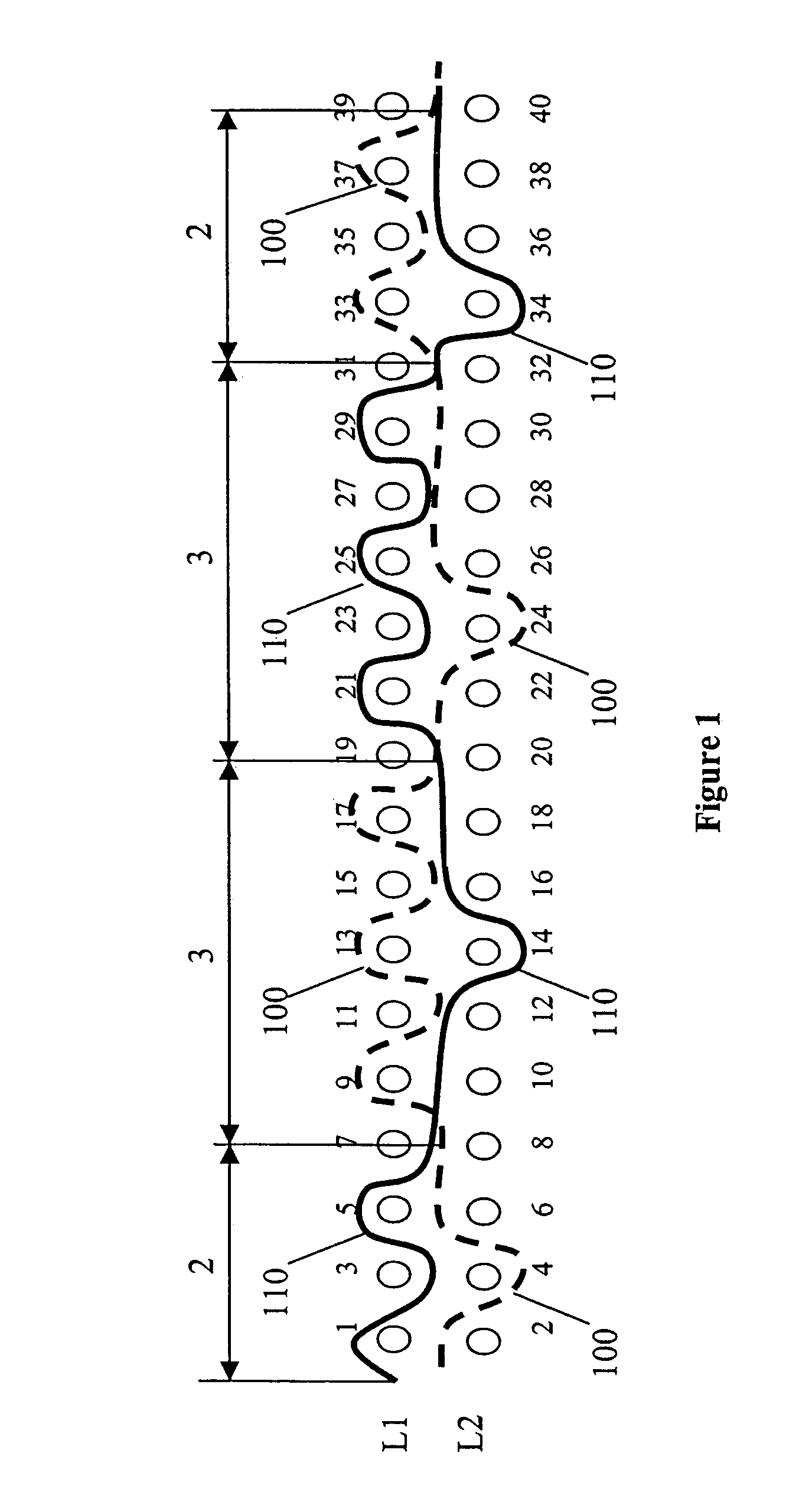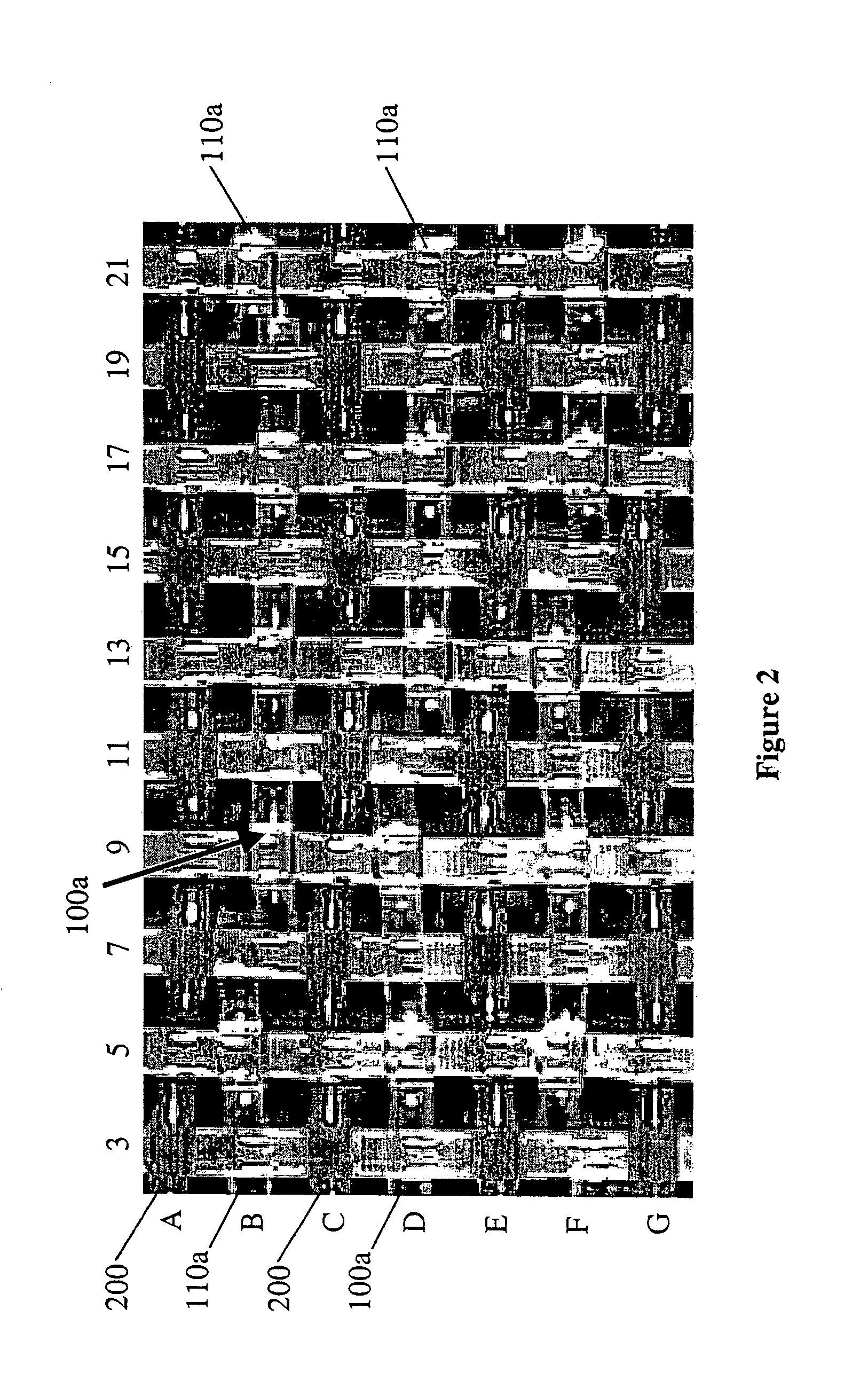Multiple contour binders in triple layer fabrics
a triple layer, fabric technology, applied in the field of fabrics, can solve the problems of short fabric life, fabric breakage, and poor sheet quality and machine efficiency
- Summary
- Abstract
- Description
- Claims
- Application Information
AI Technical Summary
Benefits of technology
Problems solved by technology
Method used
Image
Examples
Embodiment Construction
[0033]The present invention pertains to a fabric such as a triple layer fabric which may be utilized in a papermaking process. Such triple layer fabrics include a first (top) layer and a second (bottom) layer in which each of the first and second layers has a system of machine-direction (MD) yarns and cross-machine direction (CD) yarns interwoven therewith. The first layer may be a paper side or forming layer upon which the cellulosic paper / fiber slurry is deposited during the papermaking process and the second layer may be a machine side or wear side layer. The first and second layers are held together by use of a number of binder yarns.
[0034]In a first aspect of the present invention, each binder yarn weaves in sequence with the top layer more than once in a pattern repeat. Further, in a second aspect of the invention, the binder yarns weave plural contour patterns in the top layer in the pattern repeat. As used herein, plural contour patterns is defined to mean each binder yarn i...
PUM
 Login to View More
Login to View More Abstract
Description
Claims
Application Information
 Login to View More
Login to View More - R&D
- Intellectual Property
- Life Sciences
- Materials
- Tech Scout
- Unparalleled Data Quality
- Higher Quality Content
- 60% Fewer Hallucinations
Browse by: Latest US Patents, China's latest patents, Technical Efficacy Thesaurus, Application Domain, Technology Topic, Popular Technical Reports.
© 2025 PatSnap. All rights reserved.Legal|Privacy policy|Modern Slavery Act Transparency Statement|Sitemap|About US| Contact US: help@patsnap.com



